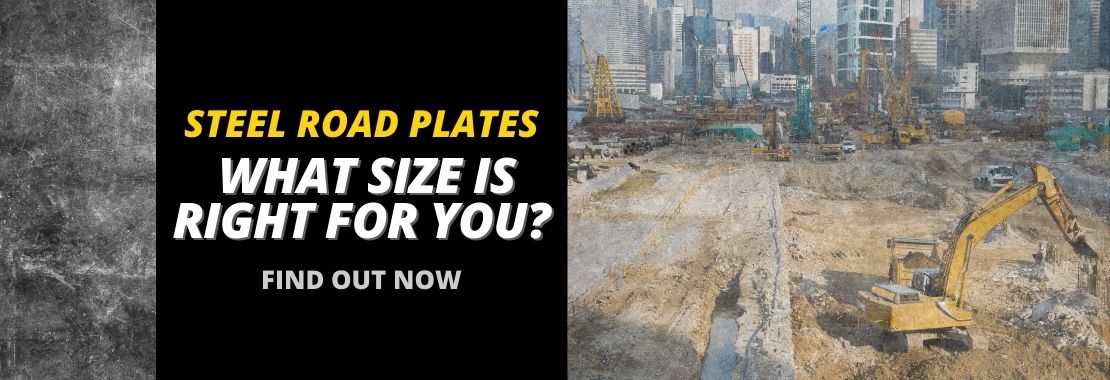Steel Road Plates Fundamentals Explained
Steel plates are supply an excellent, short-lived solution for covering harmful openings on a building and construction website. These durable, robust plates allow roadways to go back to solution to make sure that building can continue. Here we check out the design details and ideal technique installation advice. These plates can be made use of to guarantee that roadways can still be made use of whilst other stages of work proceed.
They offer an optimal compromise for keeping lanes, whilst job proceeds over night and at weekends. They are frequently seen when excavations have begun as a very early stage of building or repair tasks. These plates are made to hold up against durable use on hectic roadways. They feature an akti-skid finish and are readily available in a variety of colour coatings - Steel road plates.
The weights begin from roughly 300kg and basic roadway plates have a density of either inch or inch. The capacity to be bolted to the road.
The 3-Minute Rule for Steel Road Plates
Hinged versions for quick access to the excavation or normal accessibility, e.g. driveways. Compound plates, which can accommodate various lengths of trench. For this factor, they ought to be set up utilizing a forklift or crane.
Look for displacement by web traffic loading from the start plates ought to constantly resist variation. Examine that the plates do absent a danger to any type of kind of roadway individual and can be utilized by all roadway individuals and car types, including pedestrians, cyclists and motorcyclists. Produce a routine examination and upkeep to make certain that performance remains risk-free and maximum.
Deal with the plates properly at all times. Mechanical training guarantees that the plates are mounted accurately and securely.
If a ramp is created by the roadway layers, after that alerting signs for pedestrian and roadway individuals are needed. Constantly a conduct full website study, and take the specialist guidance of a structural designer. The Department of Transport also provides advice on installing roadway plates, please go here. SafeSite Facilities (Steel road plates)' road plates are readily available for buy or hire anywhere in the UK.
The 10-Minute Rule for Steel Road Plates

In order to improve security, there are a number of requirements and sector documents directing their usage in building and construction job zones. Steel plates have to be repaired in location to stay clear of movement.
Steel Road Plates Fundamentals Explained
Along with being strongly in contact with the sidewalk, they must be either pinned, recessed into the pavement, or safeguarded with asphalt wedges around the border. Pinning right into the pavement involves driving pins into the sidewalks along the sides of the steel plates to avoid movement. Recessing involves removing the area where the steel plate will certainly be put.
This results in the steel plate being flush with the pavement. Additionally, when several steel plates are made use of and butt approximately each various other, they need to be bonded together at the longitudinal joints. Steel plates can be very slippery, especially when they are damp, unless they have an anti-skid coating used.
Covering steel plates with a material that enhances friction helps motorcyclists and bicyclists maintain control, particularly in wet climate. Conditions which decrease pavement rubbing in work zones are of certain problem to motorcyclists and bicycles. A typical hazard in steel plate installments takes place when the user falls short to build effectively tapered ramps from the highway to the edges of the steel plate( s).
Some Ideas on Steel Road Plates You Should Know
It postures a considerable threat to motorcyclists and bicyclists who can easily blow up when they contact the abrupt/steep tapered ramp and the steel plate. Correctly conical ramps permit customers to safely go across over the steel plates. Tapers for steel plates are typically constructed of asphalt. The taper lengths vary from State to State and usually array from 20 to 1 to 120 to 1 (Steel road plates).
Division of Transportation's Federal Freeway Management (FHWA) requires that transverse pavement joints, which lead to a bump, have to be tapered at 60 to 1 (5 feet horizontal for every 1 inch of upright elevation difference). Select the right dimension. Ensure sufficient overlap. Usually, steel plates must extend at least one foot beyond the pavement opening onto firm ground.
The Of Steel Road Plates
Welding is made use of when even more than one steel plate is used and they butt as much as each various other. Plates must be countersunk when necessary as a result of unequal roads. Plates must be coated with an anti-skid finish. The edges of the steel plates should be marked/painted to boost exposure. Appropriate breakthrough indication must be used.

His history includes the construction, assessment, find out more.
These heavy-duty steel plates play a vital function in boosting construction safety, supplying momentary highways, and making sure smooth operations on various project sites. As a construction tools supplier, their relevance can not be overemphasized.
Comments on “The Of Steel Road Plates”